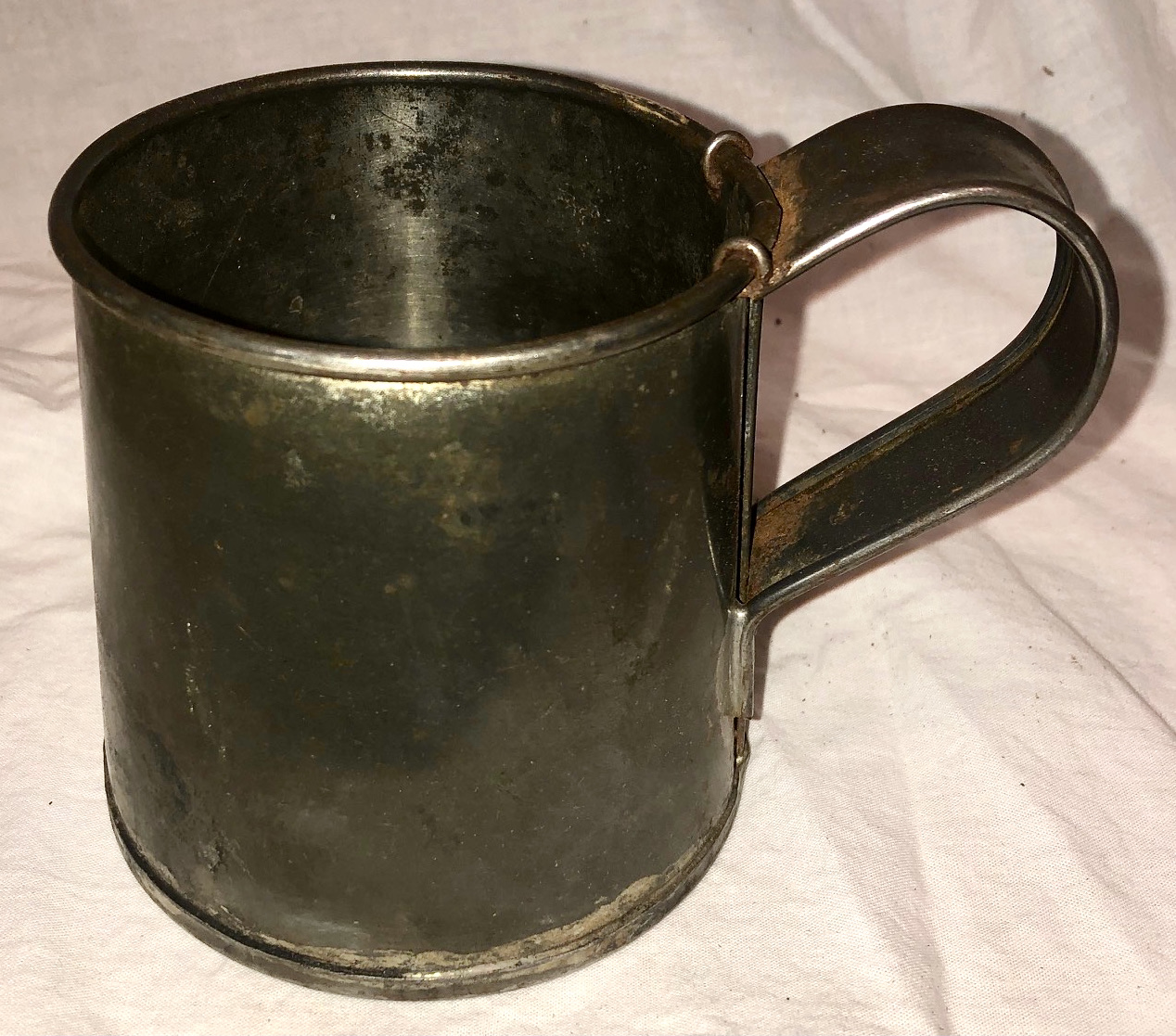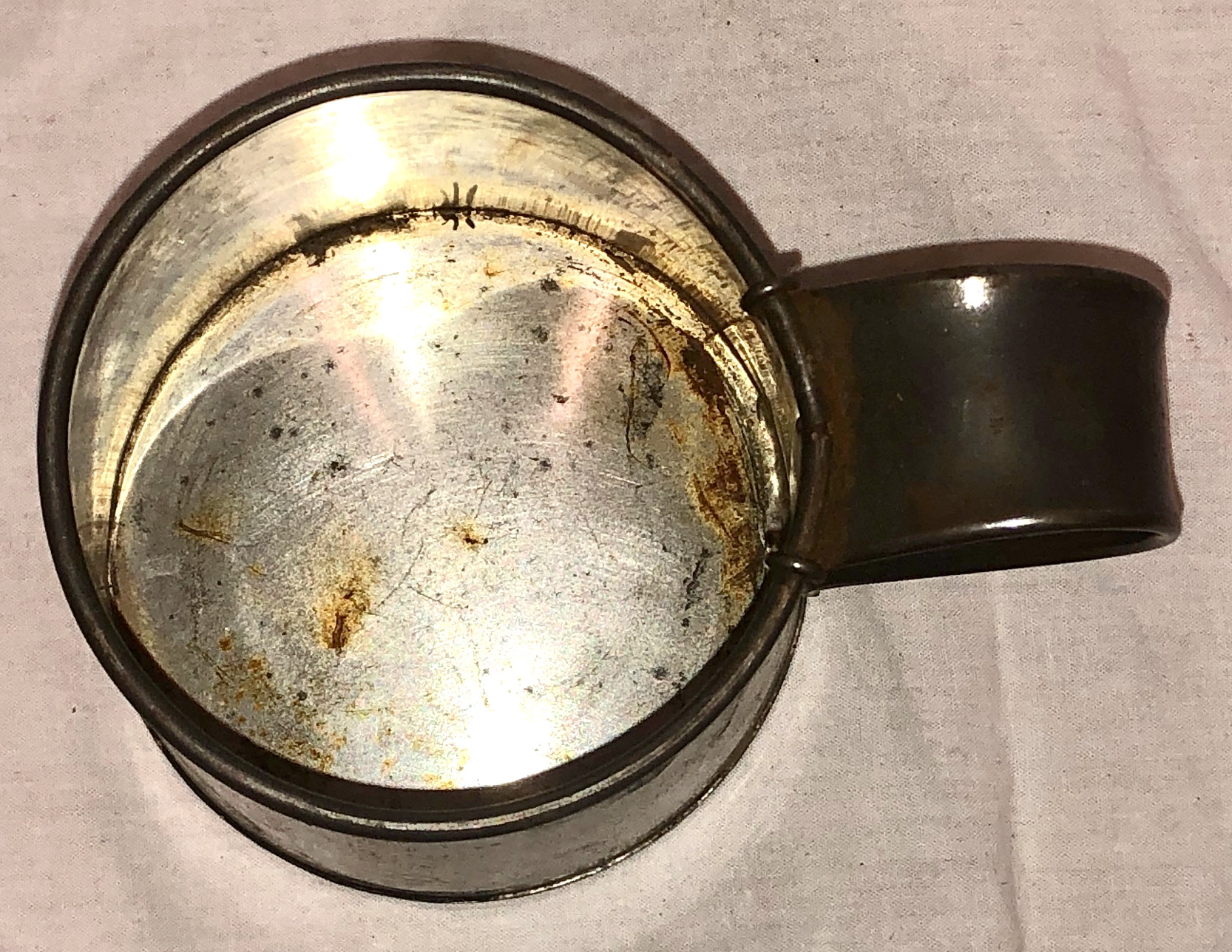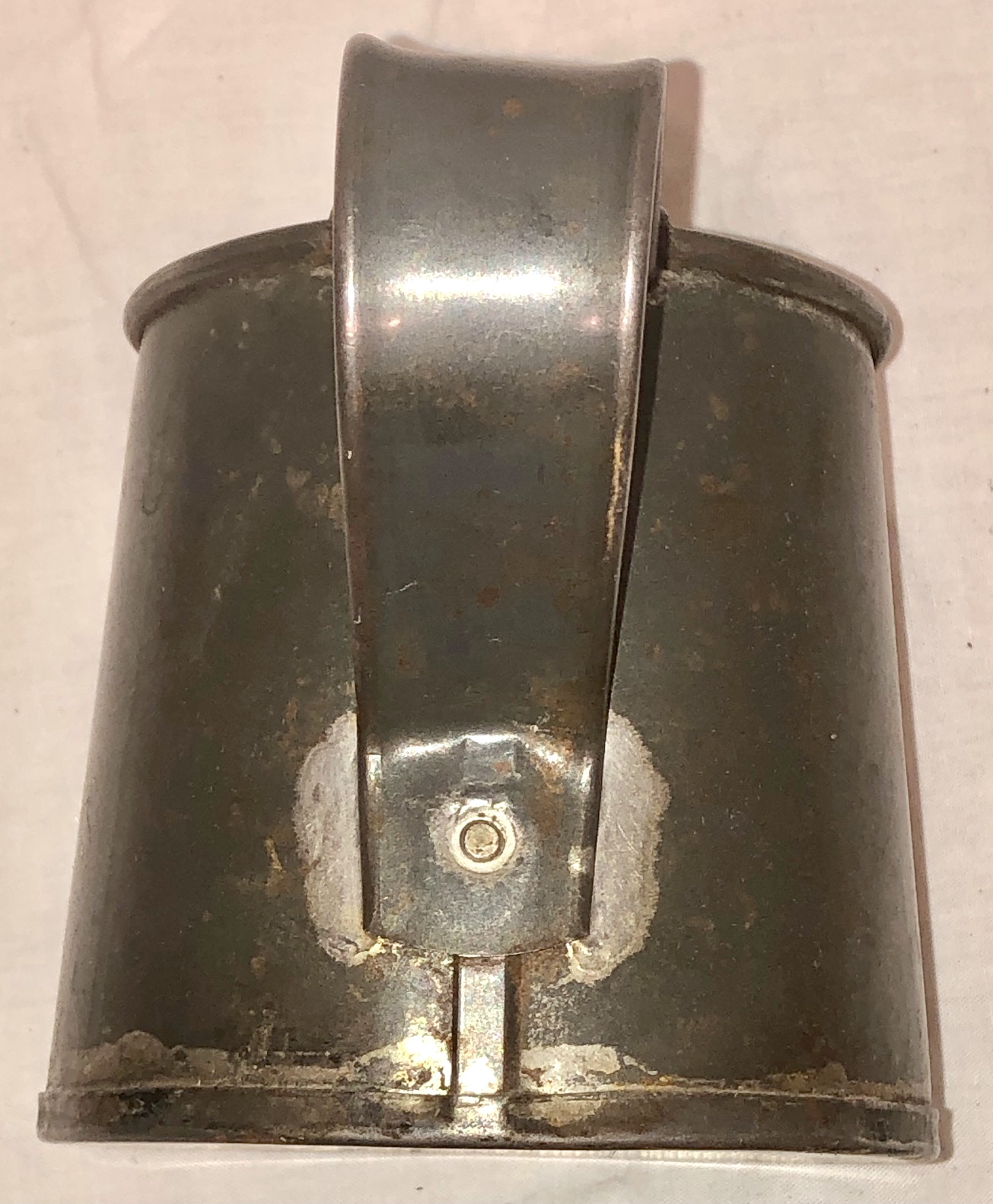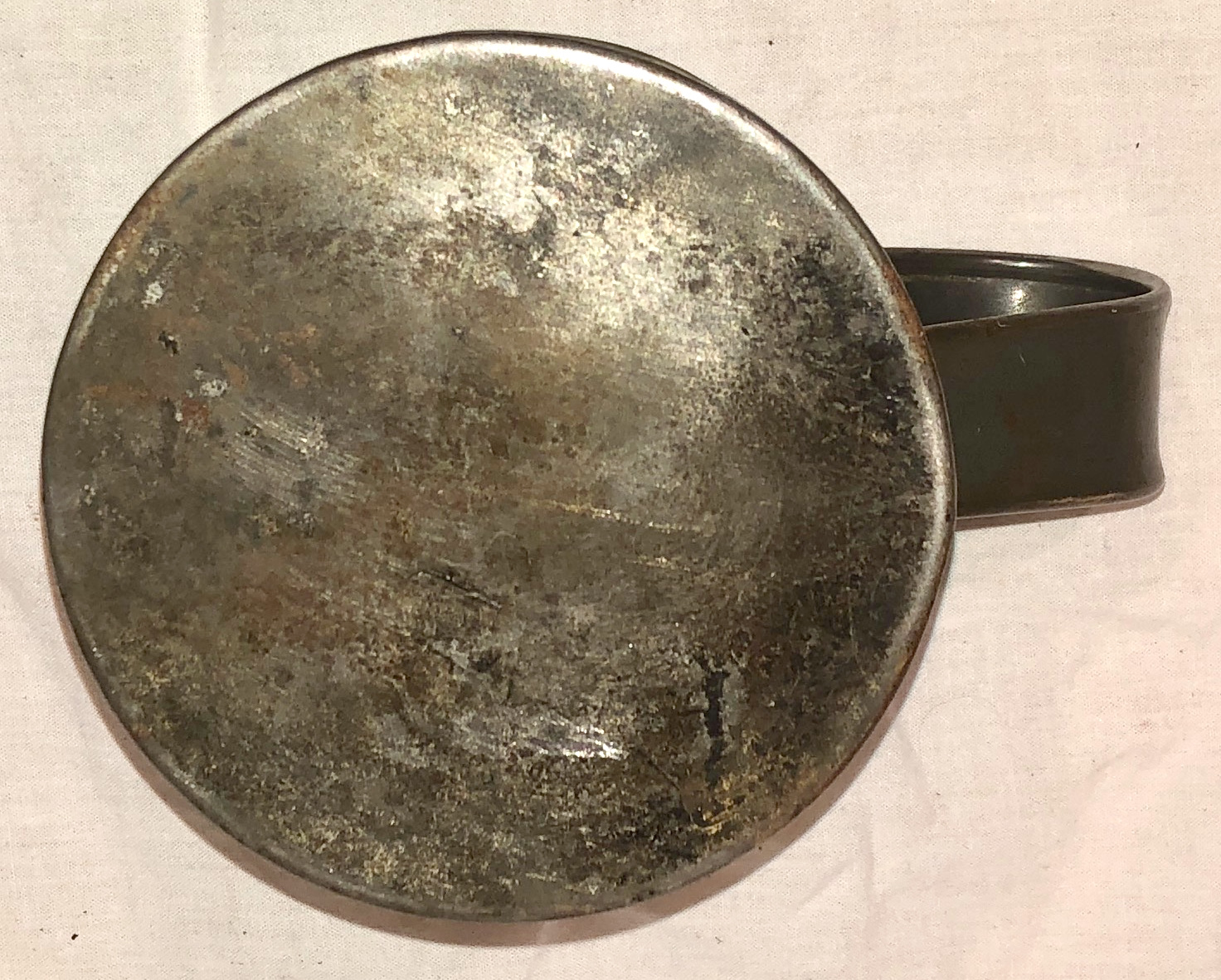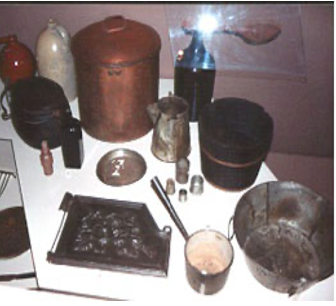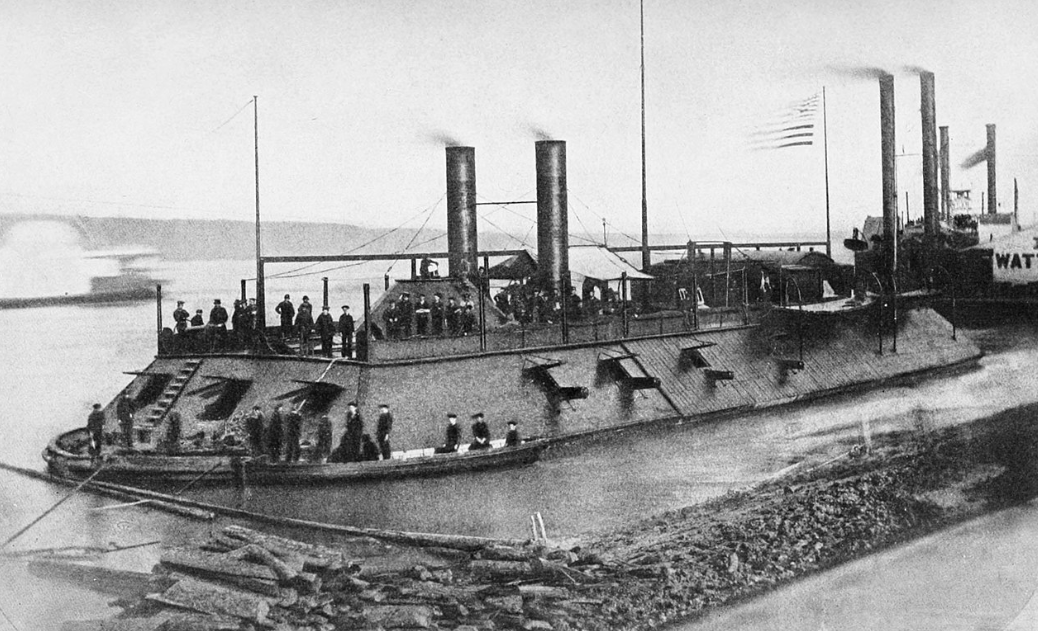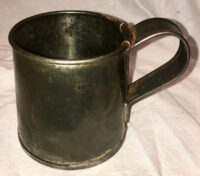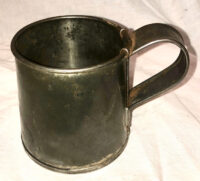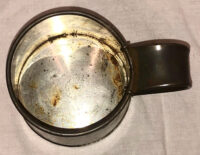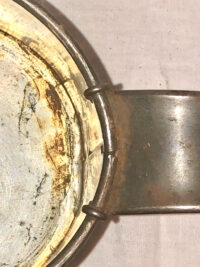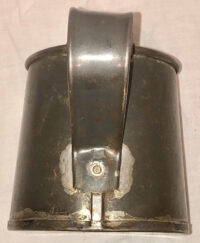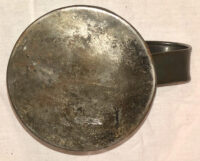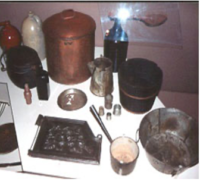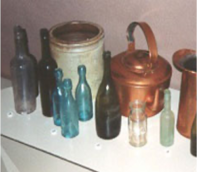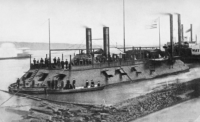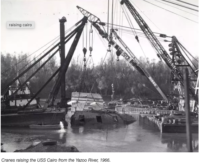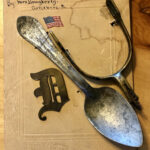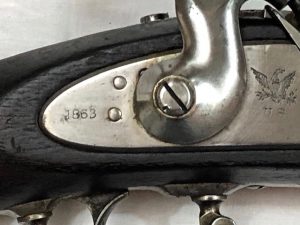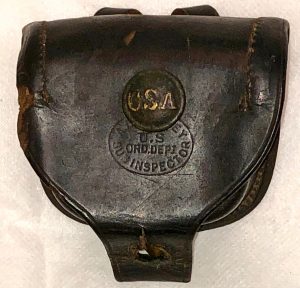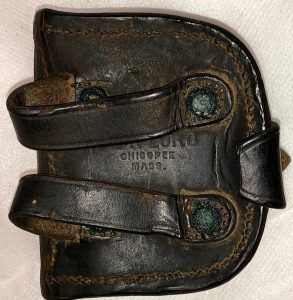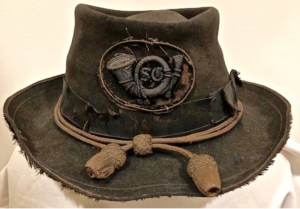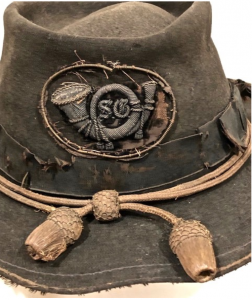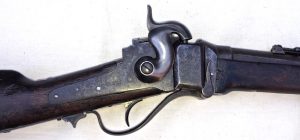Rare Civil War U.S. Navy Issue Sailor’s Cup
Rare Civil War U.S. Navy Issue Sailor’s Cup – We have had several nice examples of Federal Issue Infantry Cups from the Civil War; in fact, now good examples of these issue cups are no longer easy to find. This cup is the only one that we have ever encountered that is the Navy counterpart to the cups issued to the land-based Union soldiers. The cup is styled nearly exactly like the regulation, infantry cups, with the usual reinforcing, heavy baling wires, where the top of the handle attaches to the rim of the cup; also present, as with the land-based cups, is a rivet, where the bottom of the handle affixes to the body of the cup. Likewise, the cup is made of heavy, sheet iron, that has been cold-dipped in tin, to combat oxidation; all seams, side and bottom are lead soldered together, as the crimping machinery was not available during the Civil War. Distinctively, this U.S. Navy Issue cup is a different shape than the land-based, issue cups – this cup is shaped like a tankard, with the bottom diameter slightly larger than the rim diameter. It has been suggested that this style of cup allowed for more stability when in use aboard a ship in heavy seas.
When the Federal, ironclad, the USS Cairo, sank in the muddy, Yazoo River, when her hull was opened by a Confederate mine or torpedo, electronically detonated, in December, 1862, she was fully provisioned. Entombed in silt for nearly one hundred years, the site of the remains of the Cairo was discovered in the mid-1950s; a trove of artifacts was salvaged from the wreck, and, ultimately, with help from the State of Mississippi and the National Park Service, the hull was raised and is now on display at the Vicksburg National Military Park. A large array of artifacts removed from the Cairo are on display, to include enlisted sailors’ mess gear and cups like the cup we are listing here.
Overall, the cup is in excellent condition, with no bends or weak areas; there are some very slight areas of surface oxidation.
Measurements: Height – 4” ; Top diameter – 3.5” ; Bottom Diameter – 4”
The USS Cairo was one of the first American ironclad warships, built for the Union Navy at the beginning of the U.S. Civil War. Cairo was the lead ship of the City-class gunboats, and named for Cairo, Illinois. In June 1862, she captured the Confederate garrison of Fort Pillow on the Mississippi, enabling Union forces to occupy Memphis. As part of the Yazoo Pass Expedition, she was sunk on 12 December 1862 while clearing mines for the attack on Haines Bluff, and was the first ship ever to be sunk by a mine remotely detonated by hand.
Over the years, the gunboat was forgotten and was slowly covered by silt and sand. Impacted in mud, Cairo became a time capsule in which her unique, historical artifacts were preserved against corrosion and biological degradation. Her whereabouts became a matter of speculation, as members of the crew had died and local residents were unsure of the location. Studying Civil War maps, Edwin C. Bearss of Vicksburg National Military Park set out to search for the lost ship, using a simple magnetic compass. With the assistance of Don Jacks and Warren Grabau, it was found in 1956. In 1960, numerous artifacts were recovered from the ship, including the pilothouse and an 8-inch cannon, both preserved by the Yazoo River mud. With support from the State of Mississippi and local authorities, the gunboat was salvaged from the bottom of the river.
The hull of the Cairo can be viewed at Vicksburg National Military Park, together with a museum of its weapons and naval stores. Amongst the many incredible artifacts recovered from the wreck of the Cairo, are several examples of tableware issued to enlisted sailors; included in these well-preserved artifacts, are several issue tin cups, bowls and eating utensils. Pictured on the National Park Service’s website, as well as visible, on display, in the Cairo museum, is an identical example of this cup. This Civil War Union navy issued cup is indeed an extreme rarity.



